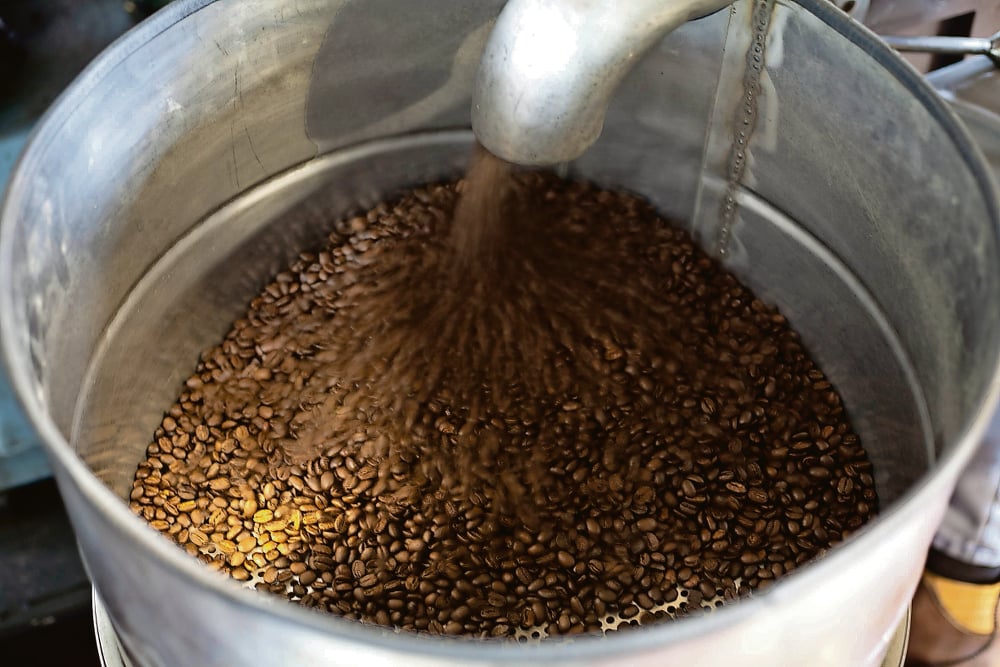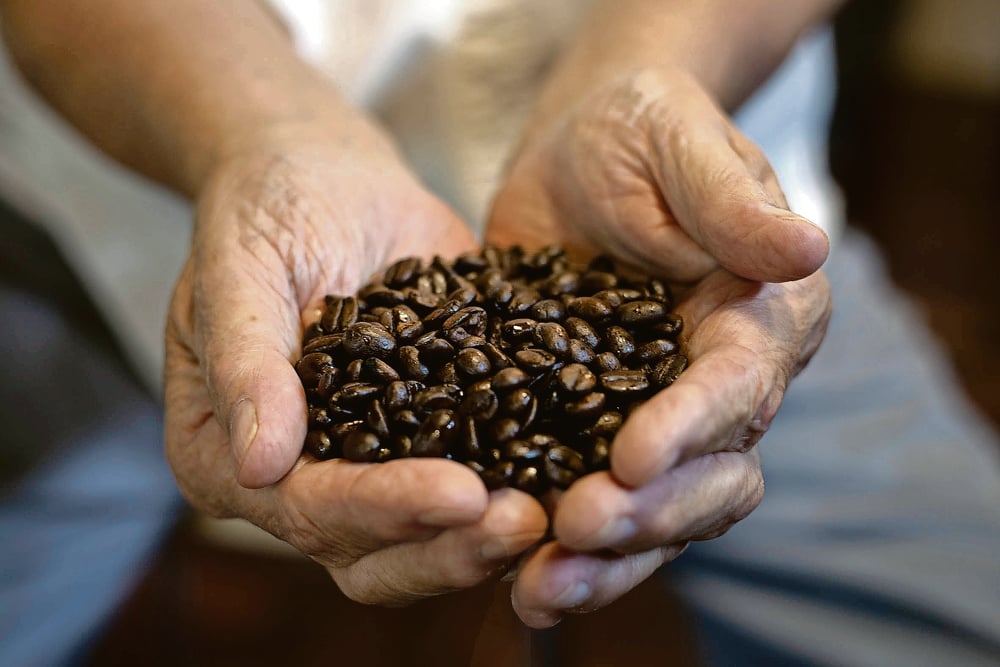Home ground: Pieter Roodt with the coffee roaster he built from scratch that he uses to create coffee using the ‘fluid bed roasting’ method.
Pieter Roodt may not wear check shirts and he doesn’t have a man-bun, a beard or tattooed arms. But he did build his own roaster from scratch, with which he creates damn fine coffee in his own backyard and that, in my books, makes him hipper than any coffee hipster.
The septuagenarian’s background is in mining and drilling equipment – he “came straight out of school and went down into the mines”. Later, as he became involved in the coffee business, he looked at how coffee roasters work and thought: “No man, there must be an easier way to do this.”
Working from the basis of a popcorn-making machine, he came up with his own “fluid bed” roasting machine design (the drum roaster is far more popular), his only guidance coming from the book Coffee Technology, written by Mike Sevitz, which he jokingly refers to as his bible. “I became a scholar of this man,” he confesses.
What is fluid bed roasting? A mass of distinct individual parts can be handled as a fluid in the right environment, and that’s what this technology is all about. The coffee beans in such a roasting machine become a liquid mass as they are lifted and rolled in a stream of hot air, ensuring that they roast evenly, which is the essential thing in roasting.
Home roasting was popular up to a century ago – anybody can roast green beans in a pan, though to get an even roast is very difficult – but with the advent of commercial coffee roasting and instant coffee, such methods became largely history. In the past 30-odd years, however, there’s been a big revival in artisanal coffee, micro-roasting and the home roasting scene. These days, home roasters order their green beans of preference over the Internet.
A small market
Coenrie Stapelberg of Coffee-Tech South Africa has sold about 50 home roasters in the past four years, so he reckons “there isn’t really a big demand in this country. It’s more about family members buying them as presents for other family members.”

Coffee roaster. (Oupa Nkosi)
Stapelberg is an engineer who specialises in heat transfer, but even with his expertise he hasn’t made his own machine, preferring to sell commercially made drum roasters.
“To transfer heat into the bean properly is quite a challenge and not many people get it right. Even some commercial roasting machines don’t transfer the heat evenly, and penetrating the actual bean effectively is tricky, for the ‘correct’ or preferred taste profile,” he says.
Roodt’s coffee roasting or cycle time is quick: he believes “the faster, the better”. The entire procedure, from firing up his gas burner to final roast, takes less than 10 minutes; it’s very hands-on and extremely accurate. He is able to adjust precisely the speed of the fan, which is the only moving part of the machine, and the airflow, heat and water. It now runs on a petrol motor in case Eskom pulls a blackout.
“I worked out with my one client to roast at 234 degrees, and I can duplicate that each time. I usually roast at 238 degrees, but his palate says that he wants it a little bit lighter,” says Roodt. “The beauty of my machine is that I can replicate the roast exactly, based on final bean temperature; when I reach 238 degrees, that is when I stop. That happens within six or seven minutes – you can’t do that with a drum roaster.”
The coffee operation
An added benefit is that Roodt’s homemade boere machine doesn’t require cleaning: “I’ve cleaned drum machines and I know what that is like,” says Roodt, although he acknowledges that “some people believe drum roasters are the way to go, because the chaff smoulders and it smokes and they like the smoky smell”.
Roodt’s coffee operation, The Cracked Pot, is in a thatch cottage close to the Ventersdorp turnoff from the R563 in the Cradle of Humankind area.
“I moved back to Jo’burg after retiring on the South Coast, but all my kids were here, so I came back.” Once a month he holds a boeremark, which has up to 60 stalls, on the expansive lawns in front of his home. Demand for his product is growing and he is now supplying to several lodges and restaurants in the Magaliesberg and Krugersdorp area.
It’s a family business and it began with Roodt and his children selling coffee at events, using French presses. But when business picked up at festivals such as Aardklop and OppiKoppi, they started getting blisters on their hands. So Roodt’s wife Rosie came up with an innovative coffee extract (the recipe is a closely guarded secret, which will only be revealed to their children in the parents’ wills), which she now sells in 300ml bottles.

Pieter Roodt holding coffee beans. (Oupa Nkosi)
The label says the only ingredient is pure Arabica coffee and Roodt reckons the extract enables faster coffee-making than any espresso machine. “It’s basically instant coffee with all the flavour of espresso coffee. And it even gets, with the correct method of making it, a crema,” says Roodt. Just add hot water.
Roodt’s next project
Another invention the family came up with was espresso shakes, made from a combination of coffee, milk and ice cream, which apparently sell like hotcakes at events, as the sun rises and demand for hot coffee wanes.
Roodt knows the technical facts of roasting backwards, such as how beans double in size as they roast while simultaneously losing up to 18% of their water content, and how roastmeisters must adjust their thermometers to their height above sea level, but his approach to excellent coffee is very down to earth.
He says “each to his own with coffee” and scoffs at coffee (and wine) tasting terminology. “Nobody can tell you what the best brew is; it is the best coffee for you. Coffee roasting is no rocket science: my only brag is that I only use Arabica – I refuse to use Robusta – and I guarantee that my coffee is fresh when you get it, and that the extract has nothing added to it.”
Roodt’s next project – coming soon – will be selling homemade mini-roasters to those who want to do it at home. The home roasters will be able to process only half a kilogram at a time, but will allow those starting off in the coffee game to experiment and roast to their individual palates. He’s even prepared to teach clients who buy the machine how to roast. I can’t think of a finer teacher.